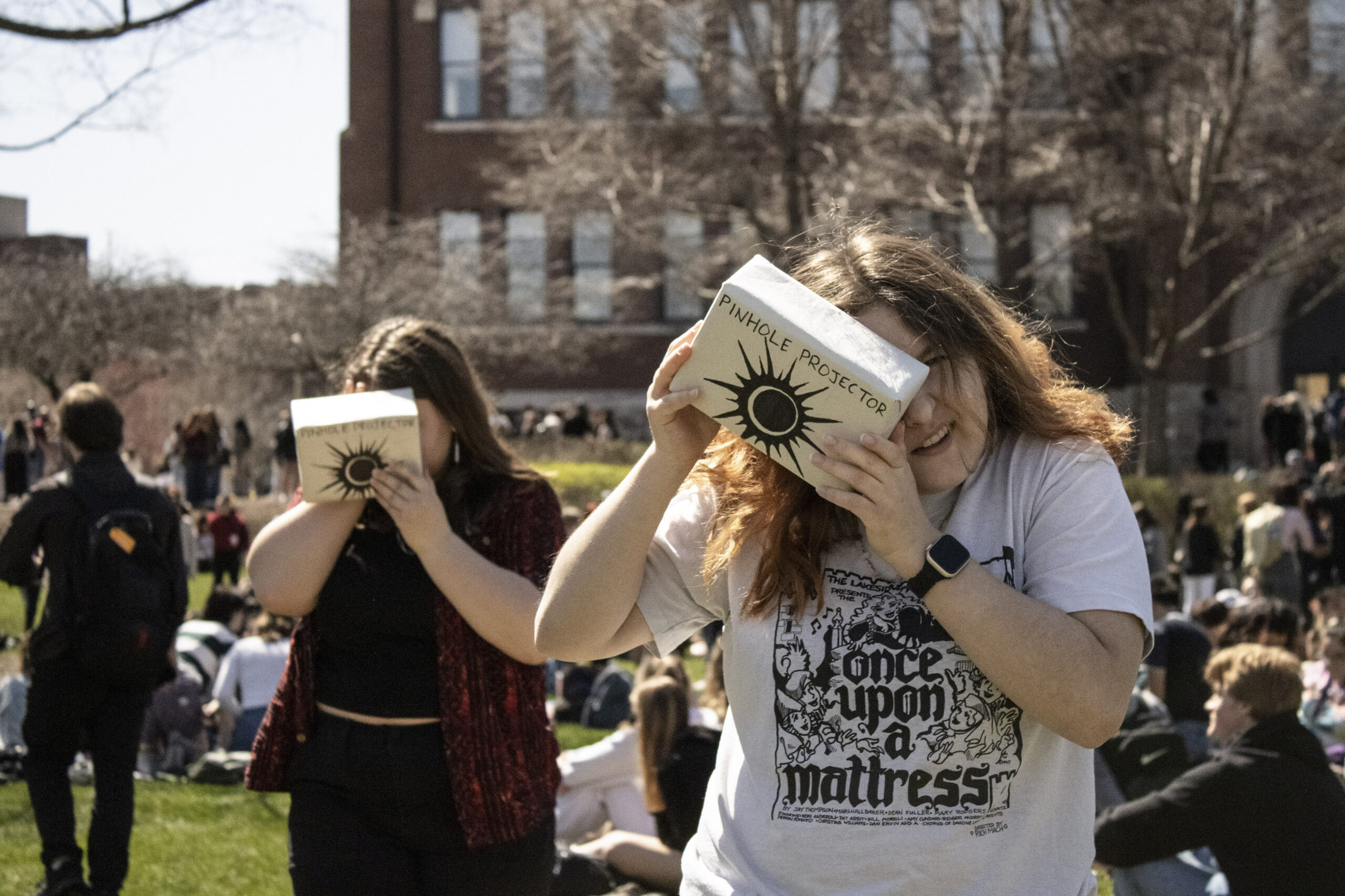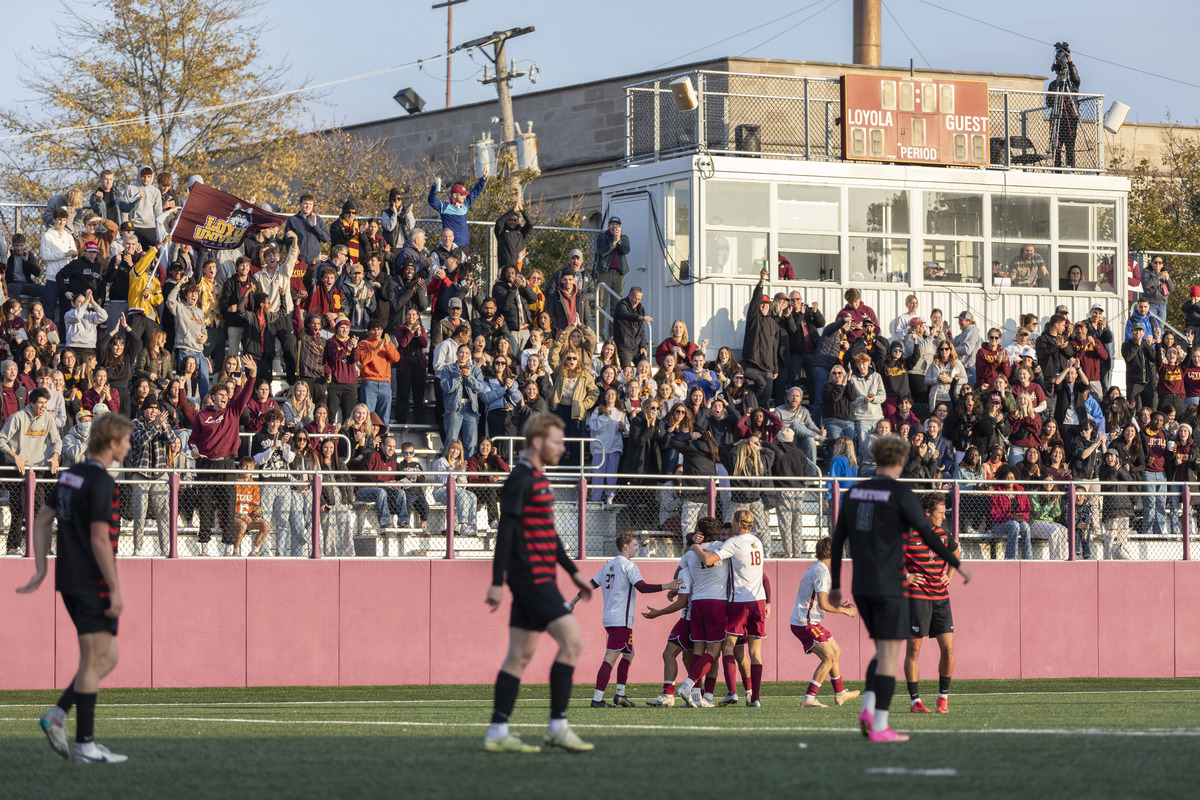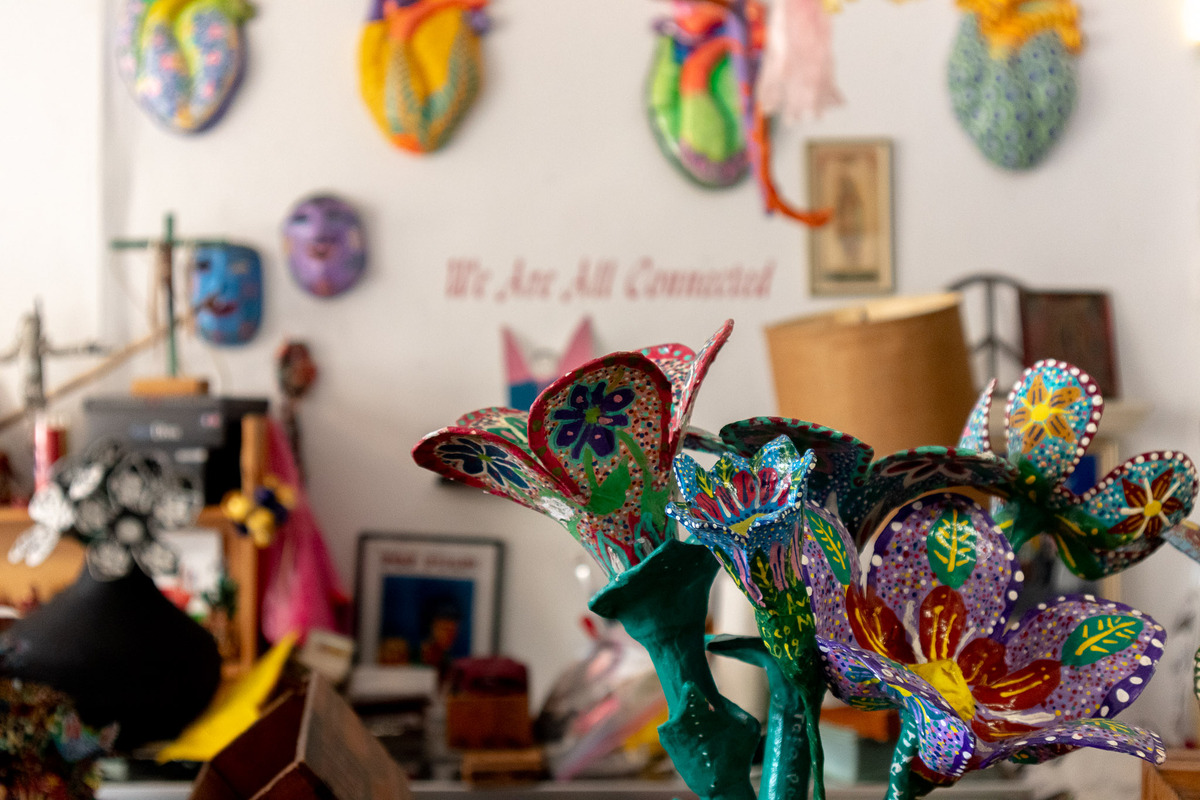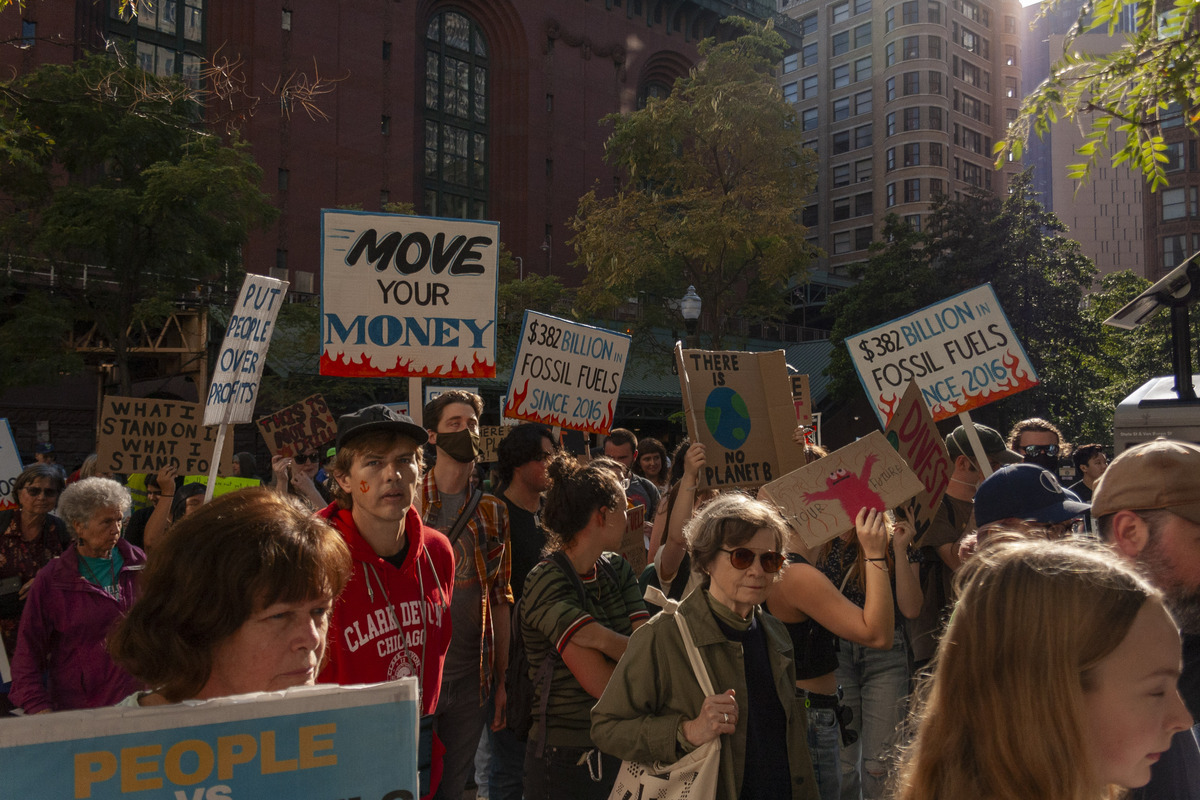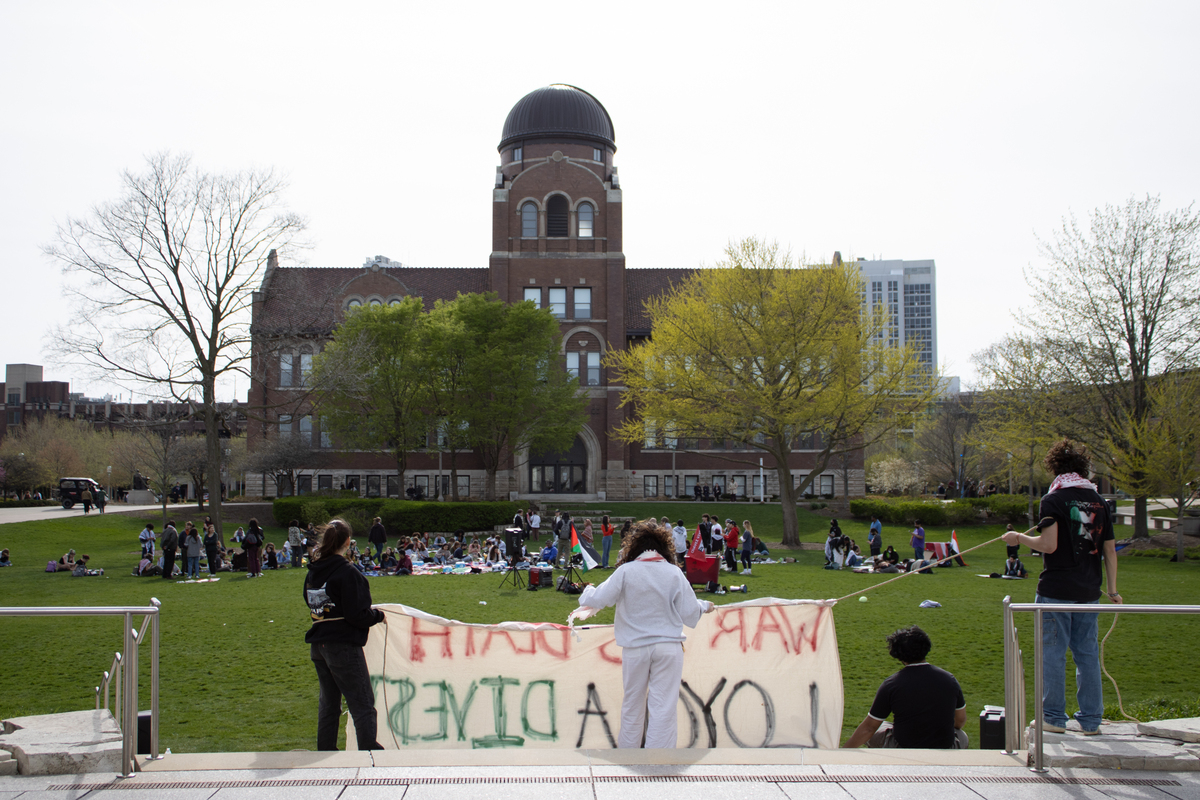Juxtaposing ancient techniques with modern themes, artist Jim Bachor takes to the streets to install intricate mosaic pieces into the city’s most treacherous obstacles — potholes.
A Painting in a Pothole: Artist Beautifies the Streets








The intersection of North Glenwood and West Estes avenues is an unimaginative grayscale, where excitement takes form through the beeping of car horns or the trudging footsteps of passersby.
Coloring an otherwise unobtrusive scape, an art piece humbly asks the attention of those mindful enough to look down. Intricate mosaic tilework frames the diner scene of Edward Hopper’s “Nighthawks” — inside of a pothole.
The mosaic is one of many pothole art installations from artist Jim Bachor, whose public works can be observed across the city, with his fine art pieces now for sale in his Uptown storefront at 1111 W. Lawrence Ave.
Bachor said he first got the idea for pothole art after observing short-lived solutions to Chicago’s brittle streets. Piecing inspiration from architectural trips to Europe, he aimed to better the roads with the durable, ancient art form.
While touring an archeological site in Pompeii, Italy, Bachor said he became consumed by the idea of making art that can last centuries. He said he quickly became drawn to mosaics, alerted by a tour guide that marble and glass don’t fade, making the ancient works look exactly as the original artist intended.
“And in that sentence, or those two sentences, really kind of changed the course of my life because I’m like, ‘Holy shit, I can, I can pursue this art form, I could do stuff that is uniquely my concepts that has the potential to last a super long time,’” Bachor said. “I just thought that was an interesting way to kind of leave your mark.”
Referencing a universal disliking for potholes, he said he believes his installations have garnered success with the general public.
“Everyone can relate to it,” Bachor said. “It’s a great equalizer — everyone hates ‘em, nobody loves ‘em.”
But after Bachor renovates a pothole, people do love them.
Ellen Wood, a Chicago native, said she learned of Bachor through his installation outside of Trump Tower and has kept up with his work ever since, attending his March 2 store opening.
The piece, titled “Liar,” depicts the word “LIAR” tiled over the Russian flag — it’s one of two pieces in Chicago that were defaced shortly after installation, according to Bachor.
“He’s one of the things that makes Chicago special — where else?” Wood said.
After pursuing a career in corporate advertising, the 60-year-old artist said he pivoted in 2013 with his first pothole being installed in his Mayfair neighborhood. The work aptly displayed the word “pothole” over the Chicago flag.
“It wasn’t like I had some master plan,” Bachor said. “I wanted to draw attention to my work in a weird way and it just blew up in a different way.”
Modernizing an art form often tied to ornate refinement, Bachor said he aimed to juxtapose the centuries-old technique with modern concepts — all told through objects like toilet paper rolls, ice cream cones and Air Jordan sneakers.
But not just any pothole will do.
The location of each hole is decided with care, with an eye toward durability. Bachor said he considers size, depth and exposure to onlookers and cars. Most of his installation sites are suggested through his personal Instagram, which has amassed more than 52,000 followers. His work allowed him to branch into different cities, completing commissioned pieces for non-profits across Washington, D.C. and New York City.
The Rogers Park installation in his “Master Pieces” collection was one of many potholes submitted by an engaged follower.
“The people were so proud of their neighborhood,” Bachor said of the community’s response to his piece. “They were so appreciative. Everyone’s appreciative at some level, but Rogers Park was really there.”
Each pothole piece is intricately tiled together and assembled at his studio ahead of time through a glass-cutting process that takes several hours, according to Bachor. His Rogers Park installation took 30 to 40 hours and over $100 to make, the artist said.
Outside of Rogers Park, Bachor said his work has been positively received by the communities impacted by his pothole installations. He said he’s received emails of pedestrians impressed by his work, even learning of a local grade school art teacher who championed a Jim Bachor-centered lesson.
Without permission from the city, Bachor arrives at the pothole site and lays the installation into quick-set mortar, which usually takes an hour. While installations in other cities were destroyed by city officials, Bachor said he hasn’t been penalized for his works across Chicago.
“If I had gotten permission, you wouldn’t be here,” Bachor said.
With 111 installations around the city, Bachor’s efforts are incomparable to the increasing plague of potholes across Chicago, which increased by 59% in 2023 with more than 17,000 reports, according to ABC7.
The city of Chicago didn’t respond to comment before the time of publication.
Much of his work reflects a sardonic worldview paired with signature, ironic humor. Other pieces are blatantly political, which he said is important for him as an artist. As a father of two, he felt compelled to speak out amidst what he deems an “interesting time.”
“I wanted to make sure, at least partially, that if my boys ever asked, you know, ‘Did you do anything during those crazy times?’ I want to make sure that I did,” Bachor said.
His March 2 opening was met with enthusiasm from local Chicagoans eager to support his work on canvas. Alongside fine art mosaics, his store included pothole-related merch, complete with apparel sloganed with “pothole crew.”
Among the jam-packed room of onlookers was Katie Rife, a second cousin of Bachor’s who hadn’t met him before attending the opening. She said the experience of touring Bachor’s Uptown gallery was “awesome.” She said she appreciates Bachor taking the initiative to not only repair potholes but enliven the street through art.
“It’s art but it’s also saying, ‘Hey, there probably shouldn’t be a pothole here,’” Rife said.
Bachor’s art gallery is open Wednesday through Saturday from 10 a.m. to 4 p.m.
All images by Angela Ramírez / The Phoenix




